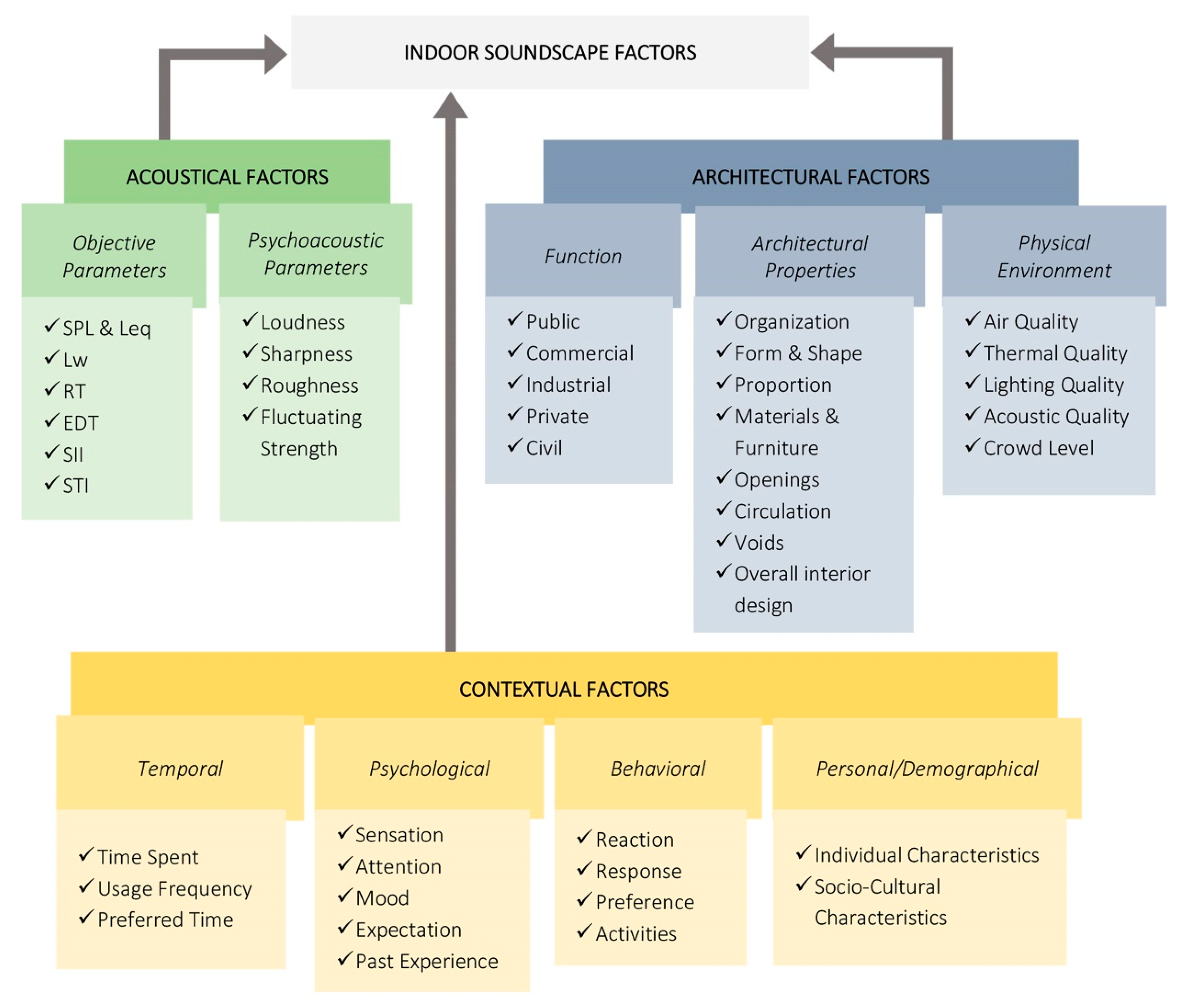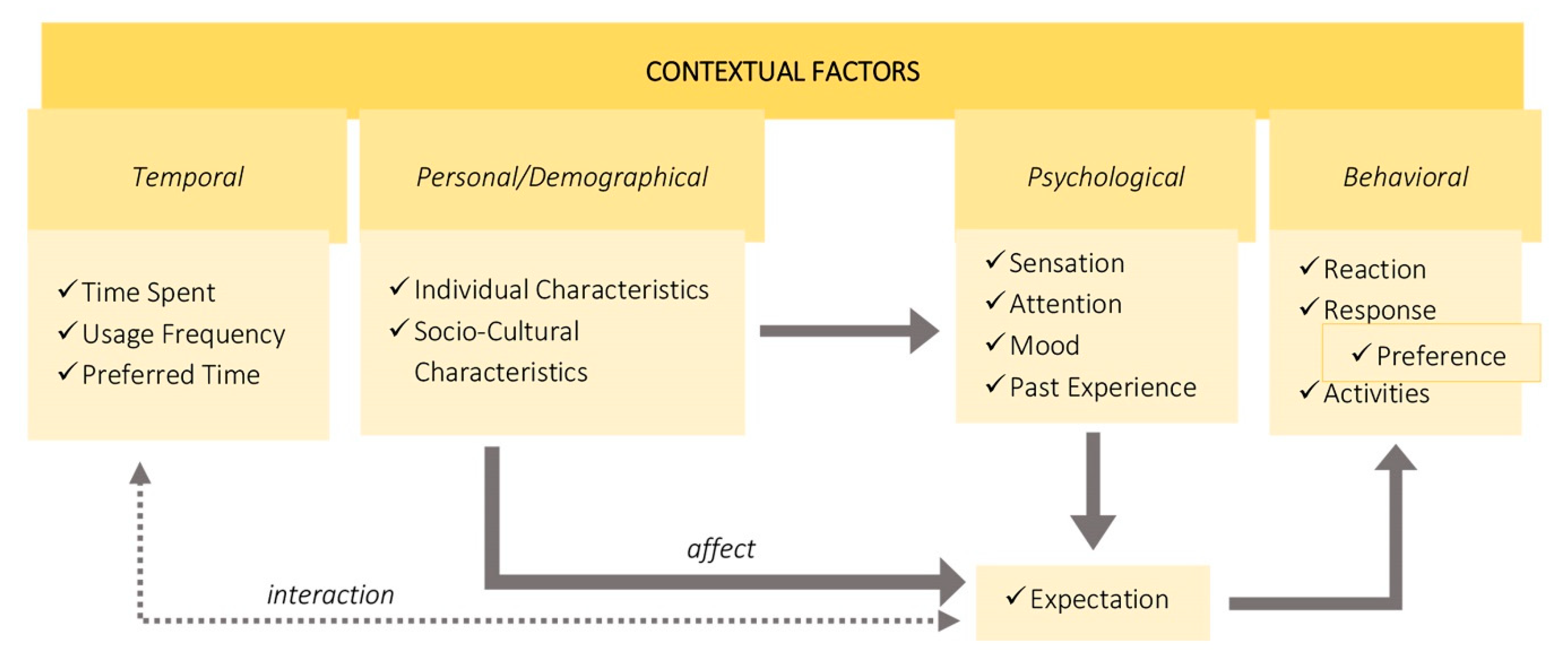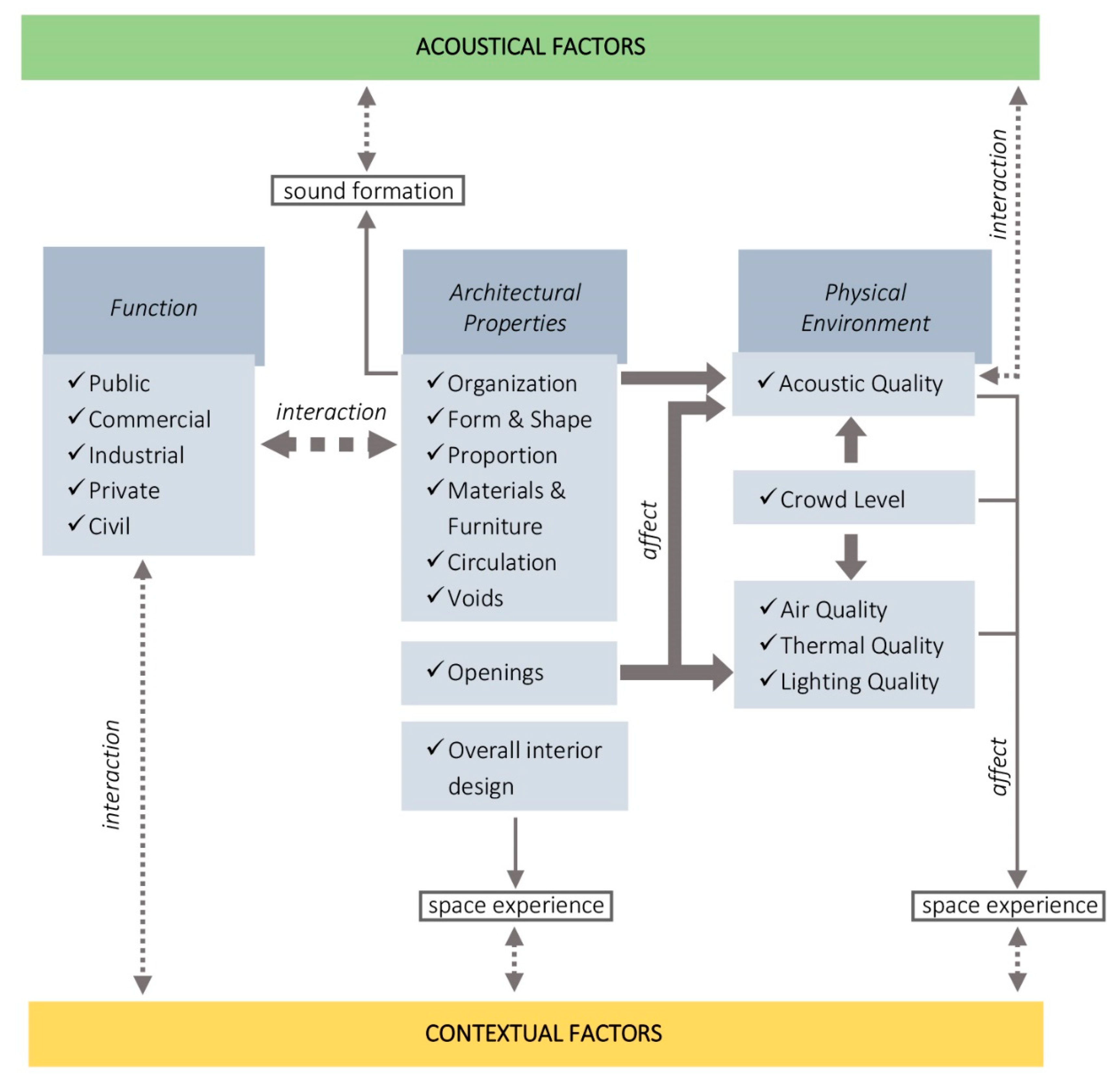Comparing Turkish and European Noise Management and Soundscape Policies: A Proposal of Indoor Soundscape Integration to Architectural Design and Application
Abstract
1. Introduction
2. Soundscape Policies
2.1. Published Documents on Soundscape
2.2. Soundscape Actions and Projects
- Understanding and exchanging by advancing the interdisciplinary exchanges, exchanging know-how on international/interdisciplinary basis, and examining the differences of cultures.
- Collecting and documenting through; soundscape data gathering that is reanalyzed in an interdisciplinary approach.
- Harmonizing, which includes reviewing and harmonizing the current methodology, developing a standard protocol, and laying the foundations for future European/international standards.
- Creating and designing through the provision of practical guidance and tools for the design of soundscapes and providing guidelines for the preservation of architectural heritage sites.
- To characterize soundscapes by capturing them and establishing a comprehensive database, which will be a cornerstone for any proposed analysis and an invaluable resource for scientists for years to come;
- To determine key factors and their influence on soundscape quality based on the database by conducting laboratory psychological evaluations, physical/psychoacoustic factors analysis and, more importantly, to perform research at a physiological/biological level, including the use of functional magnetic resonance imaging;
- To develop, test, and validate the soundscape indices through analyzing the influences by various factors using a number of interdisciplinary and transdisciplinary approaches; and
3. Noise Management Polices and Applications
3.1. Noise Regulations in Turkey and Europe
3.2. Noise Guidelines in Turkey and Europe
3.3. Turkish and European Standards on Noise Management
4. Indoor Soundscaping
4.1. Indoor Soundscape Factors
4.1.1. Acoustical Factors
4.1.2. Contextual Factors
4.1.3. Architectural Factors
4.2. Indoor Soundscape Methods
5. Indoor Soundscape Integration
6. Conclusions
- Establishment of an institution or working group relying on the subject;
- Preparation of a standard including definitions, indoor soundscape factors and methods;
- Preparation of a directive;
- Preparation of guidelines to provide information to the public and related disciplines about the concept of indoor soundscaping and implementation of the directive; and
- Providing maintenance and supervision by experts and authorities.
Author Contributions
Conflicts of Interest
References
- Aletta, F.; Kang, J.; Axelsson, Ö. Soundscape descriptors and a conceptual framework for developing predictive soundscape models. Landsc. Urban Plan. 2016, 149, 65–74. [Google Scholar] [CrossRef]
- Kang, J.; Chourmouziadou, K.; Sakantamis, K.; Wang, B.; Hao, Y. (Eds.) Soundscape of European Cities and Landscapes; Soundscape-COST: Oxford, UK, 2013. [Google Scholar]
- Kang, J.; Schulte-Fortkamp, B. (Eds.) Soundscape and the Built Environment; CRC Press Taylar & Francis Group: Boca Raton, FL, USA, 2016. [Google Scholar]
- ISO 12913-1:2014. Acoustics-Soundscape Part 1: Definition and Conceptual Framework; ISO: Genève, Switzerland, 2014. [Google Scholar]
- ISO/TS 12913-2:2018. Part 2: Data Collection and Reporting Requirements; ISO: Genève, Switzerland, 2018. [Google Scholar]
- Erçakmak, B. An In-Depth Evaluation of Noise Management and Soundscape Policies: A Proposal on Integrating Indoor Soundscaping to Design and Application Process. Master‘s Thesis, Çankaya University, Ankara, Turkey, 2019. [Google Scholar]
- Erçakmak, B.; Yörükoğlu, P.N.D. The role of indoor soundscape methodology: From architectural design process to establishment of regulations. In Proceedings of the 23rd International Congress on Acoustics (ICA), Aachen, Germany, 9–13 September 2019; pp. 1–8. [Google Scholar]
- Erçakmak, B.; Yorukoglu, P.N.D. Ulusal ve uluslararasi akustik standartların ve gürültü yönetmeliklerinin işitsel peyzaj odaklı irdelenmesi [Analysis of national and international acoustic standards and noise management policies within the scope of soundscape]. In Proceedings of the 13rd Ulusal Akustik Kongresi, Diyarbakır, Türkiye, 17–18 October 2019; pp. 227–236. [Google Scholar]
- ISO. ISO/PRF TS 12913-3. Acoustics-Soundscape Part 3: Data Analysis. Under development. Available online: https://www.iso.org/standard/69864.html (accessed on 24 October 2019).
- EEA. Good Practice Guide on Quite Areas; Publication Office of the European Union: Luxembourg, 2014.
- Aletta, F.; Kang, J. Soundscape approach integrating noise mapping techniques: A case study in Brighton, UK. Noise Map. 2015, 2, 1–12. [Google Scholar] [CrossRef]
- Brown, A.L. A review of progress in soundscapes and an approach to soundscape planning. Int. J. Acoust. Vib. 2012, 17, 73–81. [Google Scholar] [CrossRef]
- Kang, J.; Aletta, F.; Oberman, T.; Erfanian, M.; Kachlicka, M.; Lionello, M.; Mitchell, A. Towards soundscape indices. In Proceedings of the 23rd International Congress on Acoustics (ICA 2019), Aachen, Germany, 9–13 September 2019; pp. 2488–2495. [Google Scholar]
- EC CORDIS Web Site. Available online: https://cordis.europa.eu/project/rcn/211802/factsheet/en (accessed on 21 June 2019).
- Çevresel gürültünün değerlendirilmesi ve yönetimi yönetmeliği [Regulation on assessment and management of environmental noise]. Resmi Gazete Off. J. 2010, 14012.
- The assessment and management of environmental noise. Resmi Gazete Off. J. 2002, 49, 12–25.
- Çalışanların gürültü ile ilgili risklerden korunmalarına dair yönetmelik (Regulation on protection of workers from risks arising from noise). Resmi Gazete Off. J. 2013, 18647.
- The minimum health and safety requirements regarding the exposure of workers to the risks arising from physical agents (noise). Resmi Gazete Off. J. 2003, 10, 38–44.
- Açık alanda kullanılan teçhizat tarafından oluşturulan çevredeki gürültü emisyonu ile ilgili yönetmelik [Regulation on noise emission in the environment generated by outdoor equipment]. Resmi Gazete Off. J. 2006, 2000/14/AT.
- The approximation of the laws of the Member States relating to the noise emission in the environment by equipment for use outdoors. Resmi Gazete Off. J. 2000, 2000/14/EC, 1–78.
- Motorlu araçların dış gürültü emisyonları ve egzoz sistemleri ile ilgili tip onayı yönetmeliği [Regulations for external noise emissions and exhaust systems of motor vehicles]. Resmi Gazete Off. J. 2000, 70/157/AT.
- Establishing a framework for the approval of motor vehicles and their trailers, and of systems, components and separate technical units intended for such vehicles. Resmi Gazete Off. J. 2007, 46/EC, 1–265.
- Binaların gürültüye karşı korunması hakkında yönetmelik [Regulation on the protection of buildings against noise]. Resmi Gazete Off. J. 2017, 23616.
- The establishment of rules and procedures with regard to the introduction of noise-related operating restrictions at Union airports within a Balanced Approach. Resmi Gazete Off. J. 2014, 598, 65–78.
- Amending Directive 2000/14/EC on the approximation of the laws of the Member States relating to the noise emission in the environment by equipment for use outdoors. Resmi Gazete Off. J. 2005, 88/EC, 44–46.
- WHO. Environmental Noise Guidelines for the European Region; World Health Organization Regional Office for Europe: Copenhagen, Denmark, 2018. [Google Scholar]
- Ministry of Environment and Urbanization. Gürültü Azaltım Tedbirleri Kataloğu [Guideline of Noise Reduction Precautions]; Cevre ve Sehircilik Bakanliği [Ministry of Environment and Urbanization]: Ankara, Turkey, 2015.
- Ministry of Environment and Urbanization. Çevresel Gürültü Ölçüm ve Değerlendirme Kılavuzu [Guideline on Environmental Noise Measurement and Evaluation]; Cevre ve Sehircilik Bakanliği [Ministry of Environment and Urbanization]: Ankara, Turkey, 2011.
- WHO. Guidelines for Community Noise; World Health Organization: Geneva, Switzerland, 1999. [Google Scholar]
- Ministry of Environment and Urbanization. Gürültü Haritalandırma Kılavuzu [Noise Mapping Guideline]; Cevre ve Sehircilik Bakanliği [Ministry of Environment and Urbanization]: Ankara, Turkey, 2008.
- WHO. Night Noise Guidelines for Europe; World Health Organization Regional Office for Europe: Copenhagen, Denmark, 2009. [Google Scholar]
- WHO. Methodology for Systematic Evidence Reviews for the Who Noise Guidelines for European Region; WHO Regional Office for Europe: Copenhagen, Denmark, 2018. [Google Scholar]
- WHO. Biological Mechanisms Related to Cardiovascular and Metabolic Effects by Environmental Noise; WHO Regional Office for Europe: Copenhagen, Denmark, 2018. [Google Scholar]
- WHO. Burden of Disease from Environmental Noise; WHO Regional Office for Europe: Copenhagen, Denmark, 2011. [Google Scholar]
- WHO. Results from the Search for Available Systematic Reviews and Meta-Analyses on Environmental Noise; WHO Regional Office for Europe: Copenhagen, Denmark, 2018. [Google Scholar]
- European Commission. Good Practice Guide for Strategic Noise Mapping and the Production of Associated Data on Noise Exposure; European Commission: Brussels, Belgium, 2007.
- EEA. Good Practice Guide on Noise Exposure and Potential Health Effects; Publication Office of the European Union: Luxembourg, 2010.
- ISO 1996-1:2016. Acoustics-Description, Measurement and Assessment of Environmental Noise—Part 1: Basic Quantities and Assessment Procedures; ISO: Genève, Switzerland, 2016. [Google Scholar]
- ISO 1996-2:1987. Acoustics-Description and Measurement of Environmental Noise—Part 2: Acquisition of Data Pertinent to Land Use; ISO: Genève, Switzerland, 1987. [Google Scholar]
- Aburawis, A.A.M.; Yorukoglu, P.N.D. An integrated framework on soundscape perception and spatial experience by adapting post-occupancy evaluation methodology. Build. Acoust. 2018, 25, 3–16. [Google Scholar] [CrossRef]
- Bild, E.; Coler, M.; Pfeffer, K.; Bertolini, L. Considering Sound in Planning and Designing Public Spaces. J. Plan. Lit. 2016, 31, 419–434. [Google Scholar] [CrossRef]
- Bruce, N.S.; Davies, W.J. The effects of expectation on the perception of soundscapes. Appl. Acoust. 2014, 85, 1–11. [Google Scholar] [CrossRef]
- Yorukoglu, P.N.D.; Kang, J. Analysing Sound Environment and Architectural Characteristics of Libraries through Indoor Soundscape Framework. Arch. Acoust. 2016, 41, 203–212. [Google Scholar] [CrossRef]
- Herranz Pascual, K.; Aspuru, I.; García, I. Proposed Conceptual Model of Environmental Experience as Framework to Study the Soundscape. In Proceedings of the Inter Noise 2010, Lisbon, Portugal, 13–16 June 2010; pp. 1–9. [Google Scholar]
- Torresin, S.; Albatici, R.; Aletta, F.; Babich, F.; Kang, J. Assessment Methods and Factors Determining Positive Indoor Soundscapes in Residential Buildings: A Systematic Review. Sustainability 2019, 11, 5290. [Google Scholar] [CrossRef]
- Yilmazer, S.; Acun, V. A grounded theory approach to assess indoor soundscape in historic religious spaces of Anatolian culture: A case study on Hacı Bayram Mosque. Build. Acoust. 2018, 25, 137–150. [Google Scholar] [CrossRef]
- André, F. The link between soundscape perception and attention processes. J. Acoust. Soc. Am. 2012, 131, 3437. [Google Scholar] [CrossRef]
- Ozcevik, A.; Can, Z.Y. A laboratory study on the evaluation of soundscape. In Proceedings of the Acoustics 2012, Nantes, France, 23 April 2012. [Google Scholar]
- Radicchi, A. Beyond the Noise: Open Source Soundscapes. A mixed methodology to analyze and plan small, quiet areas on the local scale, applying the soundscape approach, the citizen science paradigm, and open source technology. J. Acoust. Soc. Am. 2017, 141, 3622. [Google Scholar] [CrossRef]
- Davies, W.J.; Adams, M.D.; Bruce, N.S.; Cain, R.; Carlyle, A.; Cusack, P.; Hall, D.A.; Hume, K.I.; Irwin, A.; Jennings, P.; et al. Perception of soundscapes: An interdisciplinary approach. Appl. Acoust. 2013, 74, 224–231. [Google Scholar] [CrossRef]
- Yorukoglu, P.N.D.; Kang, J. Development and testing of Indoor Soundscape Questionnaire for evaluating contextual experience in public spaces. Build. Acoust. 2017, 24, 307–324. [Google Scholar] [CrossRef]
- Aburawis, A.A.M.; Yörükoğlu, P.N.D. Occupant experience of indoor soundscapes in university office spaces. In Proceedings of the Euronoise 2018 Crete, Ankara, Turkey, 27–31 May 2018; pp. 2339–2345. [Google Scholar]
- Raimbault, M.; Dubois, D. Urban soundscapes: Experiences and knowledge. Cities 2005, 22, 339–350. [Google Scholar] [CrossRef]
- Axelsson, O.; Nilsson, M.E.; Berglund, B. A principal components model of soundscape perception. J. Acoust. Soc. Am. 2010, 128, 2836–2846. [Google Scholar] [CrossRef]
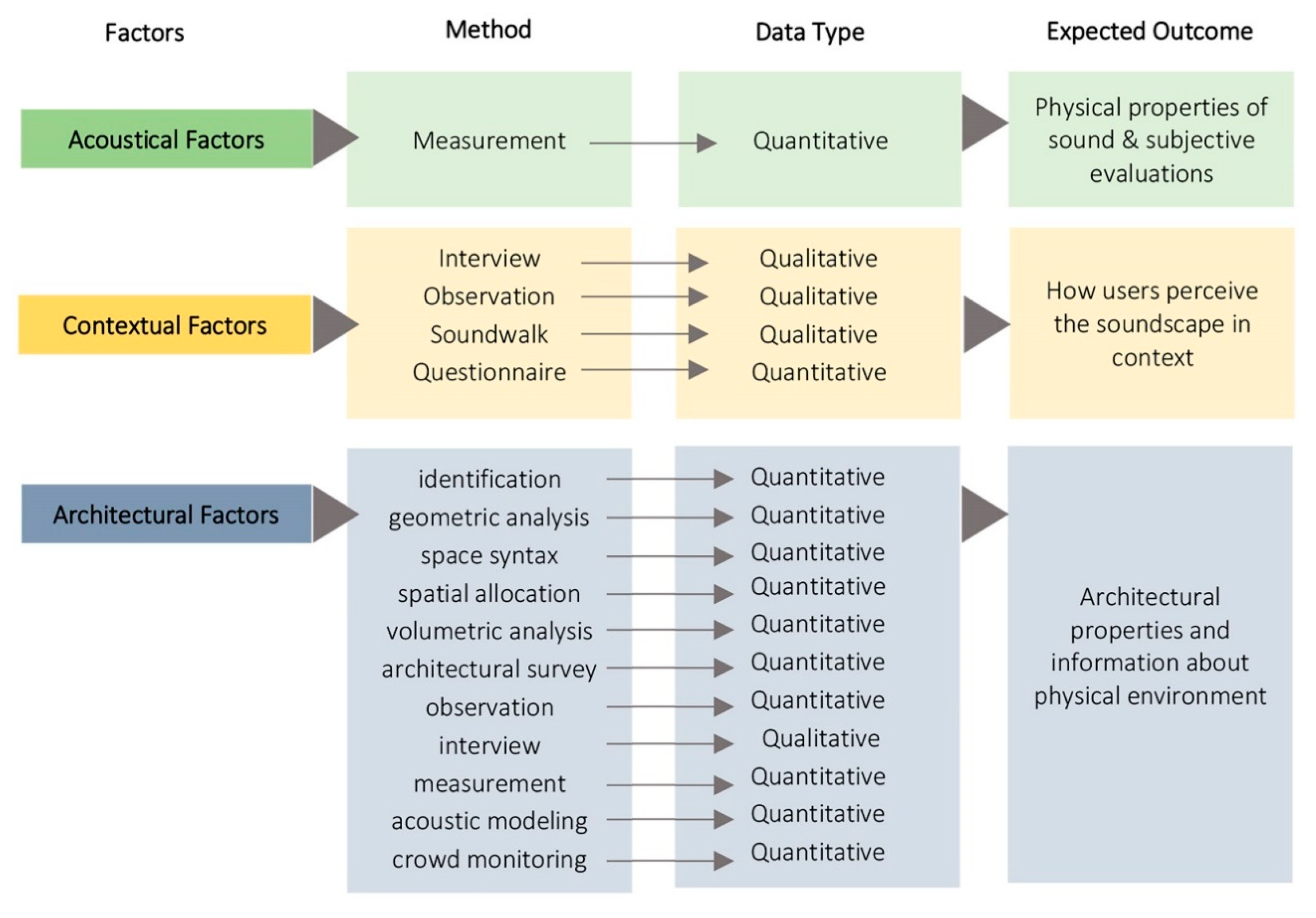
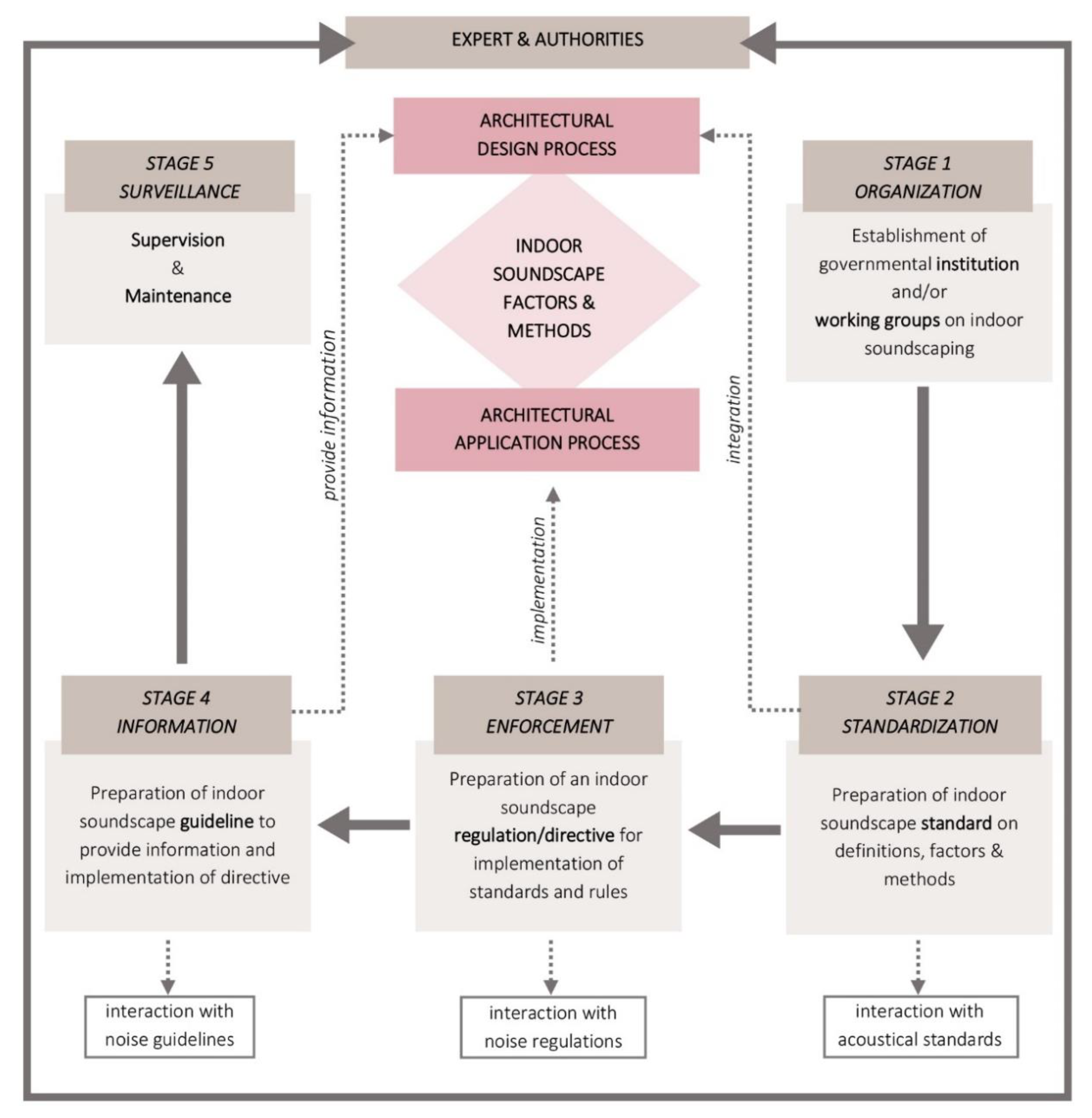
| Scope of Regulation | Turkey | European Union |
|---|---|---|
| 1. Environmental noise | 2002/49/EC [15] | Directive 2002/49/EC [16] |
| 2. Protection of buildings | 23616 (IN) [23] | - |
| 3. Protection of Workers | 18647 (IN) [17] Reference: 2003/10/EC | Directive 2003/10/EC [18] |
| 4. Airports | - | Directive (EU) 598/2014 [24] Repealed 2002/30/EC |
| 5. Outdoor equipment | 2000/14/AT [19] Reference: 2005/88/EC Reference: 2000/14/EC | Directive 2005/88/EC [25] Amended 2000/14/EC |
| 6. Motor vehicles | 70/157/AT [21] | Regulation (EU) 540/2014 Amended 2007/46/EC [22] Repealed 70/150/EEC |
| Turkey | Europe—WHO and EC |
|---|---|
| 1. Guideline on environmental noise measurement and evaluation [28] | 1. Environmental noise guidelines for the European Region [26] |
| 2. Guideline on noise reduction precautions [27] | 2. Guidelines for community noise [29] |
| 3. Noise mapping guideline [30] | 3. Night noise guidelines for Europe [31] |
| 4. Methodology for systematic evidence reviews for the who noise guidelines for European region [32] | |
| 5. Biological mechanisms related to cardiovascular and metabolic effects by environmental noise [33] | |
| 6. Burden of disease from environmental noise [34] | |
| 7. Results from the search for available systematic reviews and meta-analyses on environmental noise [35] | |
| 8. Good practice guide for strategic noise mapping and the production of associated data on noise exposure [36] | |
| 9. Good practice guide on noise exposure and potential health effects [37] |
| EVALUATION FIELD | METHODS | ARCHITECTURAL FACTORS |
|---|---|---|
| Functional Identity | Identification | Function |
| 2-D Evaluation | Geometric analysis of plans and sections Space syntax Spatial allocation | Organization Form & Shape Proportion Circulation Voids Openings |
| 3-D Evaluation | Volumetric analysis Architectural survey | Proportion Voids Overall Interior Design |
| Evaluation of Interior Design | Architectural survey Observation Interview | Materials & Furniture Overall Interior Design |
| Architectural Acoustics | Measurement Acoustic modeling | Acoustic Quality Materials & Furniture Form & Shape |
| Physical Environment | Measurement | Air Quality Thermal Quality Lighting Quality |
| Usage | Crowd monitoring | Crowd Level |
© 2019 by the authors. Licensee MDPI, Basel, Switzerland. This article is an open access article distributed under the terms and conditions of the Creative Commons Attribution (CC BY) license (http://creativecommons.org/licenses/by/4.0/).
Share and Cite
ERÇAKMAK, U.B.; DÖKMECİ YÖRÜKOĞLU, P.N. Comparing Turkish and European Noise Management and Soundscape Policies: A Proposal of Indoor Soundscape Integration to Architectural Design and Application. Acoustics 2019, 1, 847-865. https://doi.org/10.3390/acoustics1040051
ERÇAKMAK UB, DÖKMECİ YÖRÜKOĞLU PN. Comparing Turkish and European Noise Management and Soundscape Policies: A Proposal of Indoor Soundscape Integration to Architectural Design and Application. Acoustics. 2019; 1(4):847-865. https://doi.org/10.3390/acoustics1040051
Chicago/Turabian StyleERÇAKMAK, Uğur Beyza, and Papatya Nur DÖKMECİ YÖRÜKOĞLU. 2019. "Comparing Turkish and European Noise Management and Soundscape Policies: A Proposal of Indoor Soundscape Integration to Architectural Design and Application" Acoustics 1, no. 4: 847-865. https://doi.org/10.3390/acoustics1040051
APA StyleERÇAKMAK, U. B., & DÖKMECİ YÖRÜKOĞLU, P. N. (2019). Comparing Turkish and European Noise Management and Soundscape Policies: A Proposal of Indoor Soundscape Integration to Architectural Design and Application. Acoustics, 1(4), 847-865. https://doi.org/10.3390/acoustics1040051





